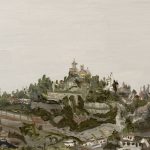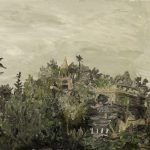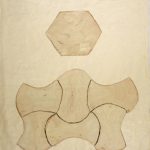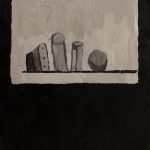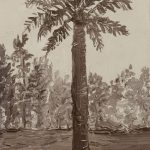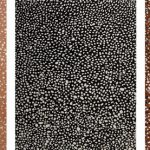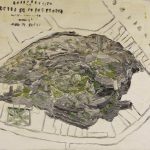ÁLBUM Nº 3 / pintura S U D A K A
To think of popular painting: the vehemence of its form, its visceral themes, the craft oriented aspect of its perspectives. Or maybe rethink the pictorial history of our region as a space far from the historicist model from the European schools, where popular painting could be considered as a bastard artistic construction and the answer to an age-old struggle: the conquest and colonization of the South-American continent.
It may be that what we call pictorial construction is also a way of establishing an independence ranging from the political to the emotional, an expectation that helps us to specify certain aspects of this history that are highlighted precisely because of its South-American nature. We realize, for example, a coarse language that at first glance does not mean much but indeed notes a revolutionary situation. Surely this language illustrates that popular painting does not have as its single function the task of communication or expression, but it serves to impose a beyond painting which is also history and the position we assume before it. Nor is an arsenal of references or a source of material, but a horizon whose transgression designates the area for action, its definition and a certain waiting for the possible. What is known are its landscapes, its artistic iterations and accountability that somehow are based on historical facts of relative mediocrity: its attachment to unreliable or ‘rogue’ files.
In this sense the proposal is, on one side, to review the popular painting and, on the other side, a personal testimony: the understanding of painting as an inclination of learning, or best expressed, to paint as a necessity. Hence the exhibition’s tag as ‘Album’, which also can be understood as a family compilation or chronic record, that is, a revisit to the pictorial history from a personal history in which the author’s memories and objects are the keys to its valuation. Strictly saying, we’re talking about a style, which can be single or continental. According to Barthes, language (the idiom/tongue engine and its history) is closer to art. The style almost beyond: images, elocution and lexicon are born from the body and the artist’s past and gradually become the automation of his art. So, under the denomination of style, an autarkic language is formed that joins the artist’s personal mythology where it settles, once and for all, the great verbal questions of his existence. But regardless of its refinement, there is something raw in Style: an aimless way, the product of an impulse, an intention. Its references are found on a biological level or a past which is more than history: it is the ‘thing’ of the artist, which is hardly a product of a choice or reflection on painting; is the ‘voice’ of an identity that results in a need.
Must we go through the official history of popular painting to understand its personal side? No doubt. Just as they were passed from Ferdinandov to Reveron (and perhaps in addition to Barvaro Rivas) one understands these records as a pure painting, which over the century, would ultimately determine the pictorial history of Venezuela. But maybe it is necessary to reformulate the starting point, considering that the historical differences between the official and the personal promote a rarefaction of the communication between both and therefore its result as a sort of staging.
Finally, what is being discussed here is a way to delineate space, of creating a somewhat oblique approximation to pictorial practice: a way of talking about the author, his history and fears; ultimately an effort to cling to something that belongs to experience, not on a level of its distant thoughts, but at the heart of its emergence.
Juan Yolin



